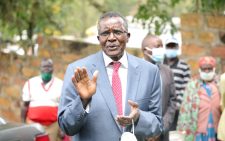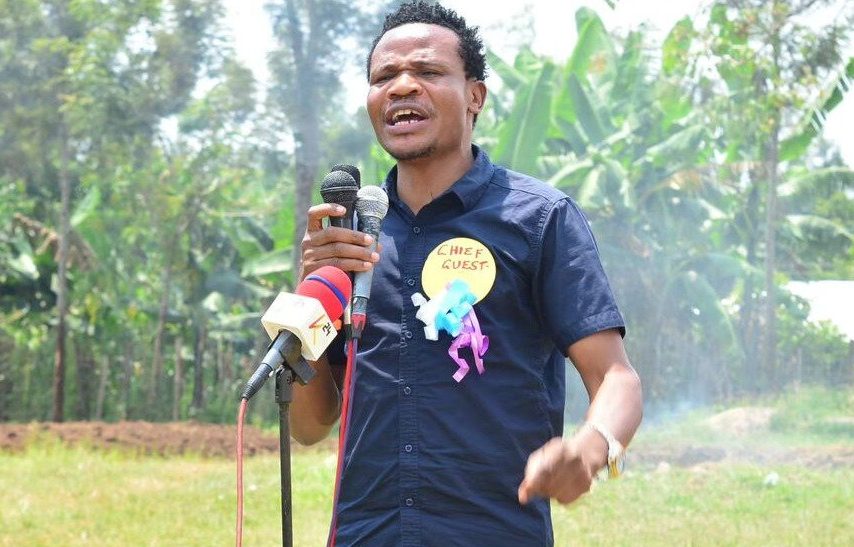Kenyans risking lives by crossing rivers – Gachagua

Deputy President Rigathi Gachagua has warned Kenyans against risking their lives by crossing swollen rivers.
He said 37 people had drowned while crossing rivers without assessing the strength of the flow.
“Not that floods are getting people in their houses, but people are going to where the floods are and daring nature. Kenyans are crossing rivers when they can see that the waters are menacing and they are rough and they still insist that they are in hurry to go somewhere, but they never reach there,” the Deputy President said.
“I want to appeal to Kenyans to be responsible. As much as they are asking the government to intervene, how can it do so yet you are the ones going into a river with waves raging fiercely?”
Gachagua told Kenyans to take care of their lives, be mindful of the people who depend on them and exercise responsibility to avert drowning incidents.
“Don’t be adventurous by daring to cross flooded rivers dangerously.You will drown.”
Without disclosing how security agencies should deal with people putting their lives a risk by crossing flooded rivers, the DP said the government had instructed security agencies down to the sub-locations to be on the lookout for people crossing rivers dangerously.
He asked governors to utilise part of their shared revenue allocations to address specific challenges posed by floods in the devolved units to boost the Sh7 billion worth of intervention that the national government has committed to alleviate the suffering of victims of floods.
Speaking when he officially opened the 17th annual planners’ convention in Diani, Kwale County, the DP attributed flooding occasioned by El Nino to poor infrastructural planning and neglected drainage systems in cities and other urban centres.
He said the Kenya Kwanza government will ensure that all urban centres are properly planned adding that haphazard development without supporting infrastructure must stop.
While offering the physical Planners a seat at the table of the forthcoming Intergovernmental Budget Economic Council (Ibec) meeting which he chairs, Gachagua said planners should help the government address challenges in urban centres including lack of social amenities in the residential areas and traffic jams.
Meanwhile, the Ministry of East African, Arid and Semi-Arid areas has classified 33 counties occupying the Arid and Semi-Arid Lands regions (ASAL) as flooding hotspots based on the recorded losses and damages by floods witnessed over the past week.
“The negative impacts of the ongoing rains are notable in terms of 76 lives lost, 34,136 households displaced, 2,445 animals of mixed species killed, and damage to critical facilities, and road infrastructure among other effects. Over 15 counties of the 23 ASAL counties, reported on average five roads and bridges to have been damaged by the ongoing floods,” the Ministry said in its report.
The Ministry noted that instances of flooding were experienced in Mandera, Marsabit, Turkana, Tana River, Kilifi, Kwale, Garissa, Lamu, Makueni, Baringo, Tharaka Nithi, Isiolo and Garissa counties.
Mandera was worst hit with a total of 9,562 households displaced and close to 10,000 livestock swept away by floods while in Garissa county 8,000 households were evacuated.
Two counties recorded the highest destruction of agricultural land due to floods with Tana River bearing the brunt after approximately 6,000 acres of cropland was waterlogged and crops destroyed while in Kwale county 1,535 acres of agricultural land with crops were destroyed.
According to the ministry, the floods situation in these counties had escalated the need for urgent humanitarian assistance especially food aid since crucial supplies are running out due to the damaged road network.
The ministry said there is a risk of contamination of surface water sources due to collapsed pit latrines and sewer lines as well as increased risks of human diseases and malnutrition risk, adding that incidents of cholera outbreak had been reported in Lamu.
Further, it reported massive damage to available permanent water sources, like boreholes, dams breaching and sand dams as well as soil erosion and landslides.
Cabinet Secretary Peninah Malonza called for rapid response to rehabilitate the dilapidated road network to facilitate delivery of humanitarian assistance to the affected population and urged the Treasury to release funds on time to support response plans.
The CS also recommended the upscale of the humanitarian assistance targeting over 30,000 households across the ASAL counties and the use of helicopters to drop food and non-food items for targeted interventions where roads are impassable.
To avert outbreaks of waterborne diseases due to contaminated water bodies, her ministry said the government should enact hygiene and sanitation measures in affected areas.











